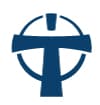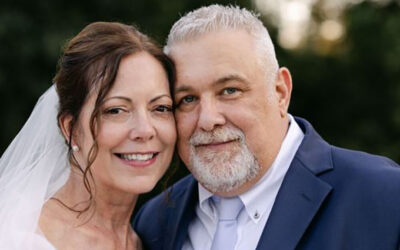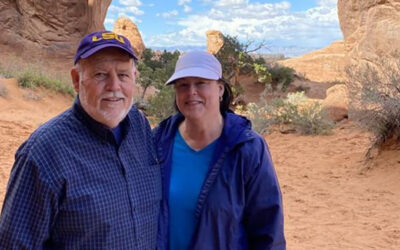For most of us, a salivary gland is something we never think about — until it becomes a problem.
For Rohan Walvekar, MD, it’s a passion, a specialty and a calling that has brought patients from across the country to Baton Rouge in search of relief.
A fellowship-trained head and neck surgeon with Our Lady of the Lake and and the director of Salivary Endoscopy Program in the Department of Otolaryngology Head Neck Surgery, LSU Health Sciences Center, Dr. Walvekar has spent the last 15 years developing expertise in complex head and neck conditions, including oral and throat cancers and advanced thyroid surgeries.
But in 2009, he introduced a groundbreaking technique to Louisiana that would redefine options for patients facing salivary gland problems: salivary endoscopy.
“In the past, when a gland was blocked or infected, there weren’t many options,” Dr. Walvekar explains. “If antibiotics didn’t work, we had to remove the gland. That’s a much bigger operation, with risks to the nerves that control facial movement. Salivary endoscopy offers a gland-preserving, minimally invasive alternative.”
The Tiny Camera Making a Big Difference
Salivary endoscopy is a specialized technique that uses ultra-fine endoscopes — some less than a millimeter in diameter — to navigate the delicate ducts that drain the body’s major salivary glands.
With precision tools, Dr. Walvekar and his team can dilate narrow ducts, remove obstructive stones and even flush out inflammatory debris, all without external incisions.
“Think of it like clearing a clogged pipe, but in a way that saves the pipe itself,” he says. “We can stretch the duct opening, use cameras to locate the blockage, and remove it with tiny baskets or other tools. It’s a same-day procedure that lets patients get back to their lives quickly.”
The alternative — removing the gland surgically — not only carries risks to critical facial nerves but can also lead to long-term dry mouth, a debilitating condition that affects quality of life in profound ways.
“Dry mouth isn’t just inconvenient. It can lead to severe dental problems, infections and a huge impact on daily function,” Dr. Walvekar notes. “Preserving gland function is always the goal.”
A Nationally Recognized Expertise
Dr. Walvekar’s work in salivary endoscopy has gained national and international attention. At LSU Health Sciences Center, Dr. Walvekar has conducted courses that trained approximately 40 physicians per year and continues to be at the forefront of Sialendoscopy education and training. He collaborates with medical device companies to refine tools and has even pioneered robotic techniques for complex cases.
Patients from Louisiana, Texas and across the Gulf South routinely seek him out, but his reach extends much farther.
“I often connect patients to centers closer to home when possible,” Dr. Walvekar says. “But sometimes, families want to come here because of the expertise and personalized approach we offer.”
Building a Destination Program — and a Legacy
While salivary endoscopy is growing in awareness, Dr. Walvekar notes that many healthcare providers are still unfamiliar with the capabilities it offers to help patients.
“Patients are getting savvier. They’re researching their conditions and looking for alternatives to traditional treatments that can save their gland and avoid major surgery.
But physician education is key, especially for pediatricians, primary care providers, ENT surgeons, oral surgeons, dentists, and emergency physicians who may encounter these issues first.”
For Dr. Walvekar, the goal isn’t just to build a busy practice. It’s to ensure the next generation of surgeons can carry this work forward.
“My practice is busy enough. What’s important to me now is mentoring younger surgeons, growing the program within our health system and making sure patients know that these options exist.”
More Than Stones: The Future of Salivary Care
Beyond stone removal, salivary endoscopy is opening doors for diagnosing and managing other gland-related conditions, including inflammatory diseases and autoimmune disorders like Sjögren’s syndrome. Dr. Walvekar’s lab continues to research how stones form and explore new ways to prevent and treat them.
“Patients are most often referred to me to assess their eligibility for the procedure. However, salivary symptoms and conditions are often the doorway to identify chronic underlying conditions,” he says. “for me, It’s more than just being about the procedure. It’s about seeing the whole patient.”
The Right Hands Matter
Salivary endoscopy is a technically demanding procedure that requires experience and precision.
“It’s microanatomy. The learning curve is steep, and how you manage the nuances — when to use a laser, how to navigate tight ducts — makes a huge difference in outcomes. That’s the advantage of coming to a tertiary care center like ours.”
For Dr. Walvekar, it’s this combination of expertise, innovation, and patient-centered care that keeps him committed to his work.
“Our Lady of the Lake has been a tertiary referral center for complex cases for a long time. What keeps me coming back is the people — the team here wants to be here. That makes all the difference.”




